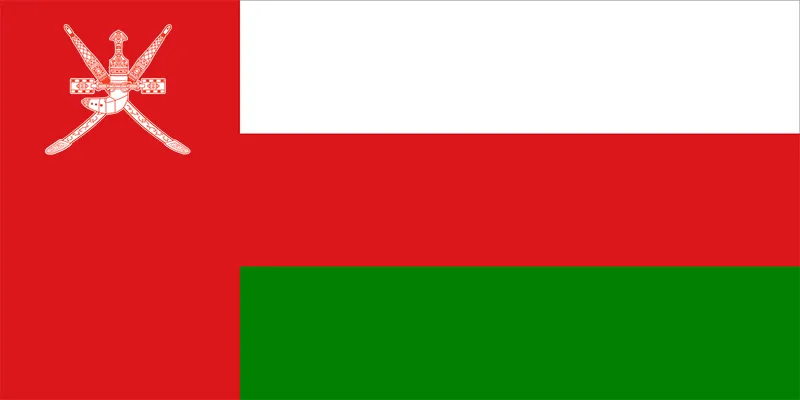Water scarcity is one of the most pressing challenges faced by countries across the globe, and Oman is no exception. Defined as the lack of sufficient and clean water to meet the needs of people and the environment, water scarcity is a critical issue that affects public health, economic growth, and sustainable development. This blog explores what water scarcity is, its causes, and how technological innovations are helping Oman tackle this problem effectively.
What Is Water Scarcity?
Water scarcity occurs when the water demand exceeds the available supply, either due to physical shortages or inadequate infrastructure to provide clean water. It is a multifaceted issue influenced by natural and human-induced factors, leading to a significant impact on agriculture, industries, and daily life. In Oman, water scarcity is exacerbated by arid climates, rapid population growth, and industrial expansion.
Causes of Water Scarcity in Oman
Understanding the causes of water scarcity is essential for developing effective solutions. Oman faces water scarcity due to a combination of environmental and anthropogenic factors, including:
1. Arid Climate and Limited Rainfall
Oman’s geographical location results in minimal rainfall and high evaporation rates, leaving limited natural water resources.
2. Overuse of Groundwater
Excessive extraction of groundwater for agriculture and urban development has depleted aquifers, a key source of freshwater in the region.
3. Population Growth and Urbanization
Rapid population growth and urban expansion have increased the water demand, straining already scarce resources.
4. Industrial Development
Industries such as oil and gas, which are vital to Oman’s economy, require significant water resources for operations, further intensifying water scarcity.
5. Climate Change
Rising temperatures and unpredictable weather patterns due to climate change are aggravating water shortages in the region.
Technological Innovations Addressing Water Scarcity in Oman
To combat water scarcity effectively, Oman has embraced a range of technological innovations designed to conserve, recycle, and augment its water resources. These advancements aim to ensure long-term water security while minimizing environmental impact.
1. Desalination Technology
Desalination is one of the most prominent solutions to water scarcity in Oman. By converting seawater into freshwater, desalination plants provide a reliable source of water for domestic, industrial, and agricultural use. Advancements in reverse osmosis and energy-efficient desalination techniques have significantly improved the viability of this technology.
2. Water Recycling and Reuse
Recycling wastewater for non-potable purposes, such as irrigation and industrial use, reduces the strain on freshwater resources. Advanced treatment technologies, such as membrane bioreactors, ensure the safe and efficient reuse of treated water.
3. Smart Irrigation Systems
Agriculture is a major consumer of water in Oman. Smart irrigation systems use real-time data and automation to optimize water usage, minimizing waste while ensuring adequate irrigation for crops.
4. Rainwater Harvesting
Harvesting rainwater is a simple yet effective method to supplement water supplies. Modern systems integrate storage, filtration, and distribution mechanisms to make rainwater collection more efficient and practical.
5. Groundwater Monitoring and Management
Technologies such as remote sensing and Geographic Information Systems (GIS) are being used to monitor groundwater levels and quality. These tools help manage aquifer usage and prevent over-extraction.
6. Leak Detection Systems
Water loss due to leaks in distribution networks is a significant issue in many regions. Advanced leak detection technologies help identify and repair leaks promptly, conserving valuable water resources.
How Does Ion Exchange Helps Address Water Scarcity in Oman?
One of the leading companies addressing water scarcity in Oman is Ion Exchange. By providing advanced water treatment and recycling solutions, Ion Exchange plays a crucial role in helping industries and communities manage their water resources more sustainably.
It offers a compact, fully automated twin-bed deioniser system with advanced counter-flow ion exchange technology. Designed for rapid regeneration within 35 minutes, it ensures continuous high-quality deionized water with minimal waste. The skid-mounted, corrosion-resistant frame includes a stainless steel pump that aids in service and provides recirculation options for optimal water quality. With a PLC-controlled cycle and a 10.4″ HMI display, it operates at low cost and high efficiency, achieving water conductivity between 1–10 μS/cm, ideal for applications demanding superior treated water.
Ion Exchange provides innovative water recycling solutions with a range of advanced products designed to meet diverse treatment needs. These include continuous media filters, which efficiently remove suspended solids and impurities; advanced oxidation systems, which break down complex contaminants using powerful oxidation processes; and membrane systems for high-performance filtration, ensuring clean and reusable water. Together, these technologies enable industries to recycle water effectively, reduce waste, and promote sustainable water management practices.
Conclusion
Water scarcity in Oman is a multifaceted crisis driven by climate challenges, population growth, unsustainable agricultural practices, and increased industrial demands. Understanding what is water scarcity and its underlying causes is crucial to developing effective solutions. By addressing these challenges, Oman can work towards sustainable water resource management and ensure a stable water supply for future generations.
Connect with Ion Exchange experts to gain further insights into sustainable water solutions.


